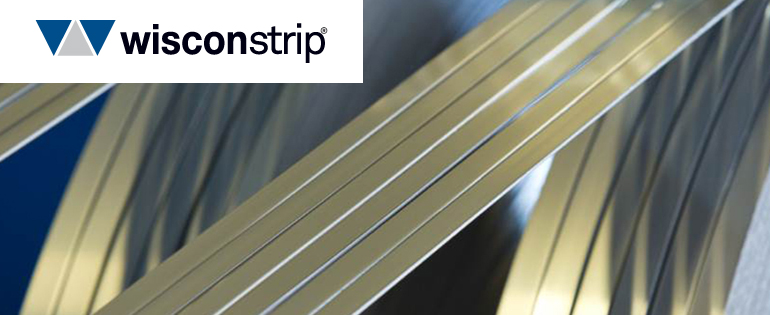Products -
Made in United States
The engineering staff of voestalpine Precision Strip WI in our site in Wisconsin has a combined more than 60 years of experience in the special niche of the precision strip steel industry, especially in the field of hardened and tempered products.

Blades for
Paper Industry
Creping Blades Steel for Tissue Products
The blades manufactured from creping blade steel are cut-to-length and ground (or in some instances skived prior to shipping in coil form) to a square edge. The square edge is positioned against the surface of a large (8-10 ft. diameter), wide (up to 24ft.) heated "drying cylinders" at the end of tissue or crepe paper production lines. The function of the blade is to remove the very thin paper from the drying cylinder, lifting it from the cylinder surface so it can be recoiled as large rolls of paper. The drying cylinders operate at surface speeds of up to 1800ft. / min. The paper rolls which are produced are as wide as the drying cylinder and up to 6-8 ft in diameter. Proper functioning of the blade is crucial to avoid down time on these very expensive production lines.
Camber and flatness are extremely important in order to be able to accurately perform the doctoring operation. Both properties are vital for correct blade operation at reduced operating pressures.
Grades: C75 and C100
Coater Blade Steel for Coated Paper Products
The function of a Coater Blade is to spread a uniform thin coating on the paper web in high-speed paper coating plants. The edge of the blade is beveled to various angles depending on the type of coating machine and the coating being applied. Due to the wide, sensitive nature of the paper web being coated, a very tight camber tolerance is extremely important to obtain a uniform coating at low operating pressures.
Excellent flatness is critical for the edge grinding process. Later, during the actual use of the blade, flatness is crucial to maintaining strip straightness when the blade is clamped into the blade holder. A high, uniform strip tensile strength, (hardness), is necessary as is a uniform distribution of carbides in the micro structure to achieve good wear resistance when working with the aggressive coating medium.
Grades: C100 and C100Cr1
The blades manufactured from creping blade steel are cut-to-length and ground (or in some instances skived prior to shipping in coil form) to a square edge. The square edge is positioned against the surface of a large (8-10 ft. diameter), wide (up to 24ft.) heated "drying cylinders" at the end of tissue or crepe paper production lines. The function of the blade is to remove the very thin paper from the drying cylinder, lifting it from the cylinder surface so it can be recoiled as large rolls of paper. The drying cylinders operate at surface speeds of up to 1800ft. / min. The paper rolls which are produced are as wide as the drying cylinder and up to 6-8 ft in diameter. Proper functioning of the blade is crucial to avoid down time on these very expensive production lines.
Camber and flatness are extremely important in order to be able to accurately perform the doctoring operation. Both properties are vital for correct blade operation at reduced operating pressures.
Grades: C75 and C100
| Range of dimensions | |
| Standard thicknesses | 0.035" and 0.050" |
| Standard widths | 3.00", 4.00", 4.50", 5.25" |
| Surface finish | scaleless blue (C75) blue polished (C100) |
| Critical parameters | Camber: 0.024" / 10ft Flatness: 0.001" PIW Hardness: 46 - 50 HRC |
Coater Blade Steel for Coated Paper Products
The function of a Coater Blade is to spread a uniform thin coating on the paper web in high-speed paper coating plants. The edge of the blade is beveled to various angles depending on the type of coating machine and the coating being applied. Due to the wide, sensitive nature of the paper web being coated, a very tight camber tolerance is extremely important to obtain a uniform coating at low operating pressures.
Excellent flatness is critical for the edge grinding process. Later, during the actual use of the blade, flatness is crucial to maintaining strip straightness when the blade is clamped into the blade holder. A high, uniform strip tensile strength, (hardness), is necessary as is a uniform distribution of carbides in the micro structure to achieve good wear resistance when working with the aggressive coating medium.
Grades: C100 and C100Cr1
| Range of dimensions | |
| Standard thicknesses | 0.015", 0.018" and 0.025" |
| Standard widths | 3.000" - 5.500" |
| Surface finish | bright polished, blue polished |
| Critical parameters | Camber: 0.024" / 10ft. Flatness: 0.001" PIW Edge quality: smooth, deburred edges Hardness: 48 - 52 HRC |





